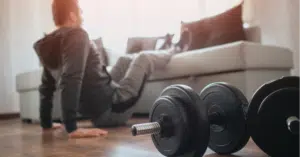Start exercising for beginners can seem daunting, especially if you’re new to fitness. But working out has an impact on many aspects of your life – it boosts your physical health, improves your mental state, and gives you more energy. Whether you want to shed pounds, build stamina, or just get moving, exercise is a great way to begin.
Also, ensure you start with low-intensity workouts and gradually build up your intensity to avoid injury. If you try to do too much too soon, you might end up sore and disappointed, which can be discouraging after all the effort you’ve put in. Having an exercise buddy or belonging to a fitness class might add a little accountability and motivation. And lastly, mix it up: do some cardio, strength training, and flexibility exercises to create a well-rounded workout.
Additionally, if your legs feel sore or swollen when you work out, you might want to try compression socks. These socks help your blood flow better and cut down on swelling, which can stop injuries and boost your performance. By following this advice and using tools like compression socks, newbies can kick off their fitness journey feeling sure of themselves.
Setting Realistic Fitness Goals
Starting an exercise plan can seem daunting, but setting achievable fitness targets can make it more manageable. To set fitness targets, you should understand your current fitness level and outline clear goals that match your lifestyle and interests.

Understand Your Fitness Level
Before you begin an exercise plan, you need to gauge your current fitness level. This will help you figure out what kind of physical activity is safe and right for you. Health experts suggest adults should do at least 150 minutes of moderate aerobic activity or 75 minutes of intense aerobic activity each week.
If you’re a beginner in exercise, start with activities that have a low impact on your body, such as walking, swimming, or cycling. These workouts will help you to build up your endurance and strength step by step. Moreover, tools like compression socks can help reduce muscle soreness and boost blood flow, supporting your overall fitness journey.
Define Your Goals
After you know where you stand fitness-wise, it’s time to set goals that match your way of life and what you enjoy. This keeps you driven and zeroed in on what you want to achieve. When you’re setting fitness goals, make them specific, measurable, achievable, relevant, and time-bound (SMART).
Some good fitness goals that follow the SMART approach include adding cardio and strength training to your workout, working out a set number of days each week, or joining a fitness class you enjoy.
To wrap up setting realistic fitness goals can make starting to exercise easier. When you know your fitness level and set clear goals, you can create a workout plan that suits your lifestyle and interests.
Your Exercise Plan
Beginning a new workout routine can feel overwhelming, but having a clear exercise plan can make it easier to navigate. Here are some tips to help beginners create an exercise plan that works for them.
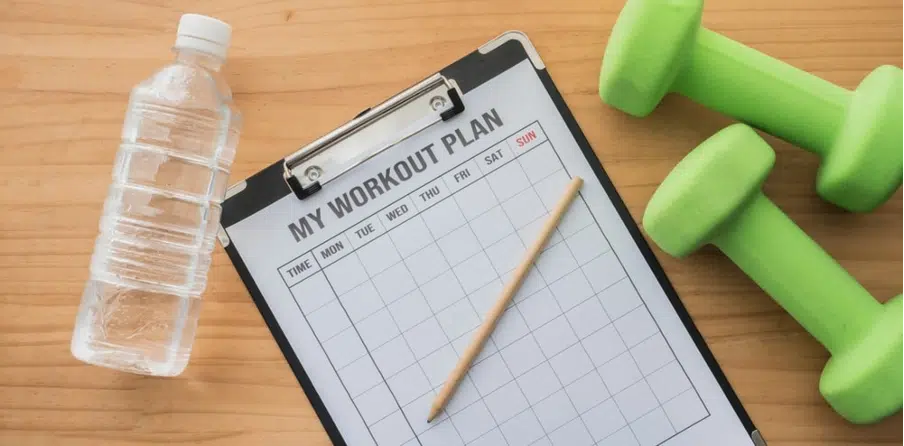
What Exercise to Do
When you’re making an exercise plan, pick the right workout first. If you’re new to exercising, go for workouts that match your fitness level and that you actually like. This helps you keep up with your routine and reach your fitness goals.
For newcomers, good options include walking, jogging, biking, swimming, and weight training. Remember to consider any health issues or injuries when deciding on a workout. Compression socks can be beneficial if you have circulation problems.
How to Structure Your Routine
After selecting suitable exercises, it’s time to plan your routine. New exercisers should work out at least 30 minutes, five days a week. You can split this into smaller sessions throughout the day if needed.
Your routine should have both cardio and strength training. Cardio exercises boost heart health and stamina while strength training builds muscle and overall fitness.
Newcomers should begin with easy exercises and increase the challenge and length over time. Remember to take rest and recovery days to prevent injury and exhaustion.
These tips help beginners create an exercise plan that suits them and reach their fitness goals.
Different Types of Exercises
Strength Training 101
Strength training exercises are part of any workout regime. It builds muscle mass and increases bone density and overall strength. The best starting point would be bodyweight exercises like push-ups, squats, and lunges. Gradually, resistance bands or dumbbells can be added to take up the level they are working out at a notch higher.
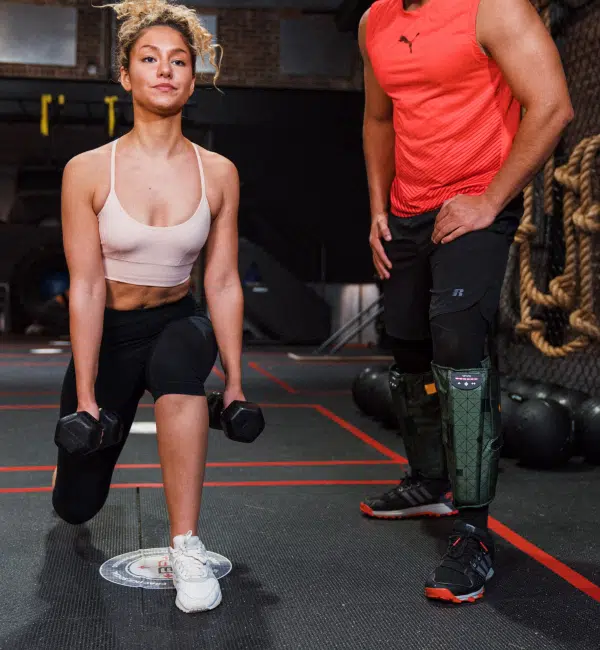
The focus has to be on major muscle groups like the chest, back, legs, and arms. Sample strength training routine for beginners includes:
- Push-ups
- Squats
- Lunges
- Dumbbell curls
- Tricep dips
- Planks
Do strength training at least twice a week. Give your muscles time to rest and recover between workouts.
Aerobic Exercises 101
Aerobic exercises, also called cardio exercises, are good for heart health, burn calories, and reduce the risk of chronic diseases. If you’re a beginner, begin with low-impact exercises like walking, cycling, or swimming.

Do at least 150 minutes of moderate-intensity aerobic exercise per week. It can be:
- Brisk walking
- Cycling
- Swimming
- Dancing
Compression socks are beneficial during aerobic exercises as they enhance blood flow and help minimize muscle soreness. Ensure proper dress code and appropriate shoes to protect from injury and feel comfortable during workouts.
This pairing will give you overall health and fitness, including strength training and aerobic exercises in your workout routine. Varying these exercises will also prevent boredom and make workouts interesting.
Exercise Intensity
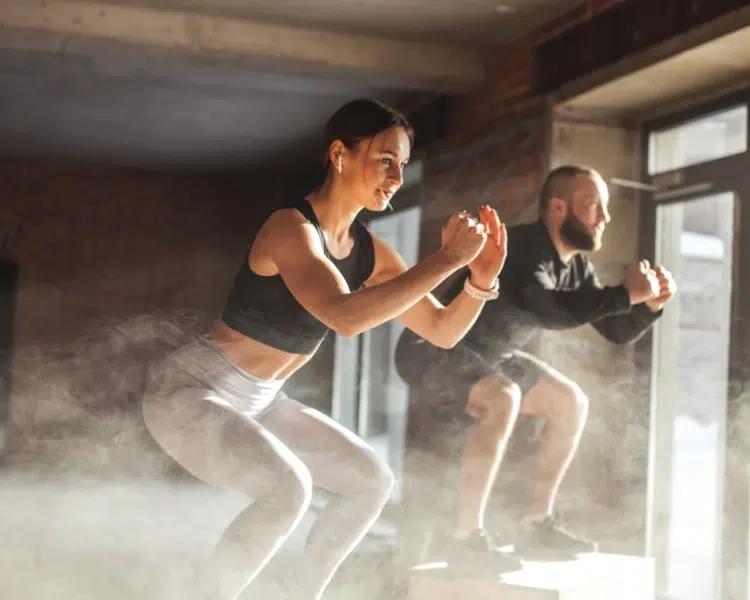
Low Intensity
Low intensity means any activity that raises your heart rate and breathing without making you pant. Walking gentle yoga, and stretching are examples of low-intensity exercises. These suit beginners who are starting to exercise or people with health issues that stop them from doing high-intensity workouts.
Moderate Intensity
Moderate intensity refers to any activity that increases your heart rate and breathing to a level where you can talk but not sing. Brisk walking, cycling, and swimming are examples of moderate-intensity exercises. These activities benefit heart health, help burn calories, and build endurance.
High-Intensity Interval Training
High-intensity interval training (HIIT) alternates short bursts of intense activity with periods of rest or low-intensity exercise. HIIT workouts can be completed in 20 minutes. This type of exercise impacts calorie burning, heart health, and strength. However, HIIT is not suitable for beginners or people with health conditions.
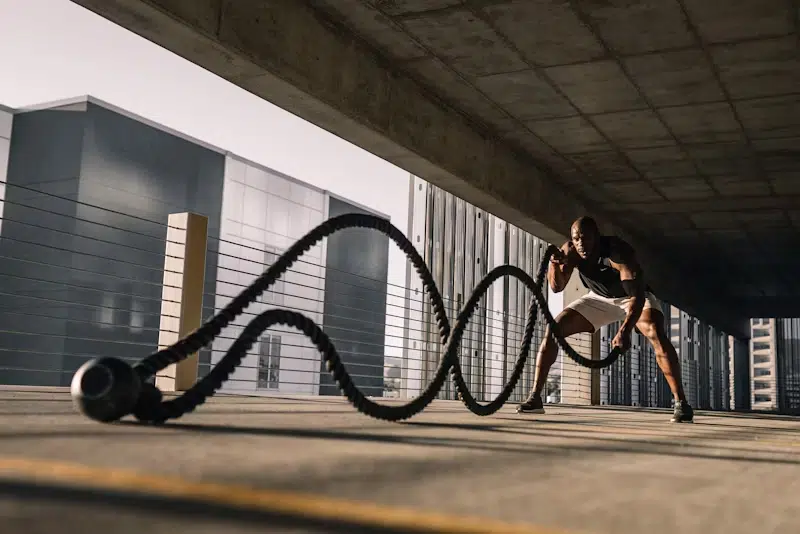
When you begin working out, pick exercises that match your fitness level and aim. Low-intensity activities work well for newcomers. Moderate-intensity workouts boost heart health and stamina. High-intensity interval training burns calories and improves heart health but suits those already in good shape.
Wearing compression socks while exercising can enhance blood flow and lessen muscle aches. Make sure to select the right compression level for your needs. If you have any worries, ask a doctor for advice.
Pay Attention to Your Body
Embarking on exercise can be challenging for beginners. To avoid injuries and get the best results, pay attention to your body. Here are some ways to tune into your body during workouts:
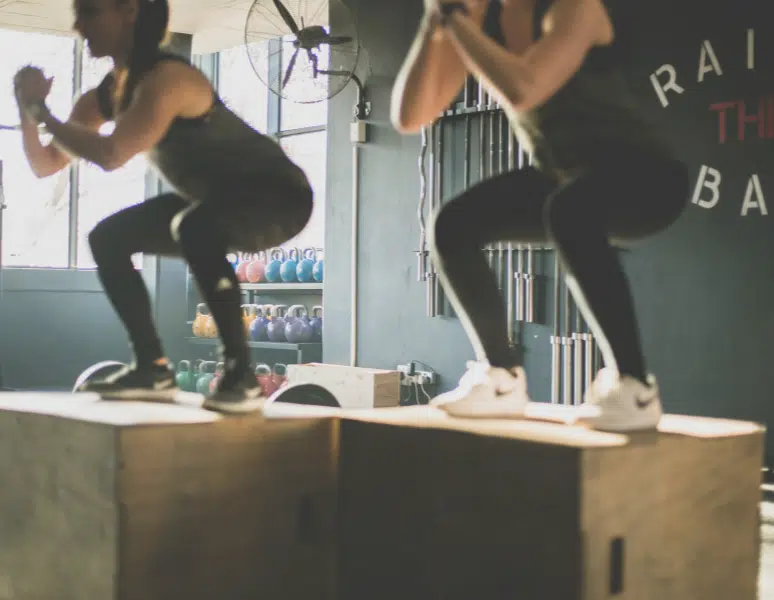
Muscle Aches
Muscle soreness is common after exercise for newcomers. However, it’s crucial to distinguish between soreness and pain. Sore muscles indicate adaptation to your new routine, while pain signals injury. If you experience pain during your workout, stop right away and get medical help.
Rest Periods
Rest periods play a key role in muscle recovery and growth. Give yourself at least 48 hours between workouts that focus on the same muscle groups. Pushing too hard can cause injuries and slow your progress. Use rest periods to tune in to your body and check how you’re feeling. If you’re worn out or hurting, take a break and allow your body to bounce back.
At the same time, putting on the right gear has an impact on supporting your body during workouts. For example, compression socks boost blood circulation and lessen muscle aches and tiredness. They work well for high-impact exercises and long-distance runs.
To avoid getting hurt and reach your fitness goals, listen to your body. Begin and step by step increase how hard and long you work out. Over time and with regular practice, you can build a healthy and long-lasting exercise routine.
Stay Motivated and Make Exercise a Habit
Your Motivation
One of the hardest parts of starting to exercise is staying motivated. To keep your drive, you need to find a reason to exercise that matters to you. This could be anything from boosting your health to fitting into a specific outfit.
Another way to keep yourself motivated is to set goals you can reach. Begin with small targets and increase them. Give yourself a pat on the back for your progress as you go such as running a minute longer or lifting a bit more weight.
Exercise Habit
Exercise demands time and effort. Forming a habit plays a crucial role in integrating exercise into your daily life. Schedule your workouts at the same time each day to make them part of your routine.
Fitness apps can help you stay consistent and develop a habit. These apps track your progress, establish goals, and provide encouragement. If you need additional support, consider hiring a health coach to guide you through your exercise routine.

To wrap up staying motivated and turning exercise into a habit requires time and effort. Discover what drives you, set reachable goals, form a routine, and use tools like fitness apps and health coaches to keep yourself on track. Remember to wear compression socks while working out.
Monitoring Progress and Seeking Professional Help
Tracking Your Success
As a newcomer, you need to monitor your progress to maintain motivation and see your improvements. Tracking progress can help you spot areas that need work and celebrate your wins. You can keep tabs on your progress by keeping a journal using a fitness app or taking before-and-after photos.
A good way to check your progress is to keep tabs on how often you work out how long you exercise, and how hard you push yourself. To keep improving and avoid getting stuck make your workouts tougher and longer. You can also measure things like your weight, waist size, and body fat percentage.
When to See a Health Professional
Exercise has a lot of good points, but it’s smart to talk to a doctor before you start working out if you have health issues. A health expert can help you figure out the best workout plan and make sure you’re exercising in a safe way.
Also, get medical help if you notice any odd symptoms while working out, such as chest pain, trouble breathing, or feeling dizzy. If you have any worries about your health or fitness, talk to a doctor before you start exercising.
Benefits of Compression Socks
Athletes and fitness buffs often wear compression socks. These socks help blood flow better, reduce sore muscles, and prevent injuries. They also reduce swelling and speed up recovery after a workout.

Not everyone needs compression socks, but they can help people who tend to swell up, have poor blood flow, or stand or sit for long periods. If you’re thinking about using compression socks, check with a doctor or trainer to see if they’re right for you.
Conclusion
Kicking off an exercise routine can be a real challenge, but with the right attitude and strategy, it can become second nature. When you set doable goals map out a plan, and weave exercise into your daily life, newcomers can build a solid base to stay fit for the long haul.
Keep in mind that sticking with it is crucial for exercise. Begin with small, reachable targets, and step by step, ramp up how hard and long you work out to steer clear of burnout and getting hurt. Also, pick activities you like that match your interests so working out doesn’t feel like a drag.
Compression socks can help beginners who start an exercise routine. These socks boost blood flow and lessen muscle soreness. This can stop injuries and help muscles recover after a workout. Beginners who wear compression socks during and after exercise can feel the good effects of better blood flow and less tired muscles.
To wrap up starting to exercise takes time and work, but it pays off. With the right attitude, way of doing things, and tools like compression socks, beginners can build a base for staying fit their whole life.
FAQ’s
1. How can I fit exercise into my daily life?
Make exercise a part of your daily life by setting a fixed time for it each day. Begin with easy steps such as a quick walk at lunch or stretching in the morning. make your workouts longer and harder as you get used to them. Sticking to it matters most so pick activities you enjoy and do them .
2. How does regular exercise benefit my mental health?
Exercise often has a positive impact on mental health. It helps reduce anxiety and depression, lifts your mood, and boosts your emotional state. When you work out, your body releases endorphins, which are natural mood boosters. It also improves your sleep and helps your brain work better, which supports your mental health even more.
3. What are the key components of a structured exercise program for beginners?
A good workout plan for newbies should mix cardio, strength, and stretching. Start with easy cardio like walks, do bodyweight exercises for strength, and stretch, or try yoga for flexibility. Work out for 30 minutes five days a week, and make it harder and longer.
4. Does working out help stop or control gut and kidney problems?
Working out has a positive impact on preventing and controlling gut and kidney issues. It boosts digestion and keeps weight and blood pressure in check. Moving gets digestive muscles going and makes you less likely to get constipated. For your kidneys, it helps you manage your weight and blood pressure, which lowers your chance of getting sick. Talk to a doctor before you start any new workout plan.
5. How can you work out often and keep your drive?
Work out often, keep your drive set goals you can reach, and keep tabs on your progress. Team up with a workout buddy or sign up for a fitness class to stay on track and have fun. Switch up your routine to keep things fresh and give yourself a pat on the back when you hit milestones. To stay driven, think about how exercise boosts your body and mind.
